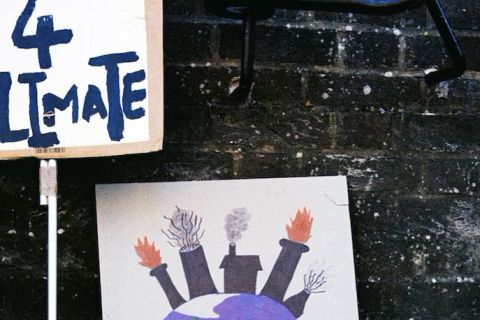
Ecological concerns and climate change have risen on governmental policies around the globe, but regulatory differences between nations may leave gaps – or even work against each other – if not planned deliberately.
Research led by Associate Professor Ishani Mukherjee at Singapore Management University focuses on the case of biodiesel policy in Indonesia, using policy network analysis to investigate types of relationships between policymakers and between the policies they enact.
Read the original research: http://doi.org/10.1111/ropr.12479
Transcript:
Hello and welcome to Research Pod. Thanks for listening and joining us today. In this episode we’re talking about government policy surrounding environmental sustainability. For this, we will be drawing from a study by Ishani Mukherjee, Associate Professor of Public Policy at Singapore Management University, which focuses on the case of biodiesel policy in Indonesia. This study has received the Best Article Prize for 2022, presented by Review of Policy Research, a top-tier journal in the field of public policy.
The study uses policy network analysis to investigate types of relationships between policymakers and between the policies they enact—from regulations to fiscal incentives. It goes on to explore how such policy networks create entrenched styles of governance around environmental sustainability. Indeed, understanding the factors shaping environmental governance is crucial in today’s world, where policymakers face conflicting demands—to promote conservation and restrict emissions in the context of ecological and climate change, whilst also securing vital fuel supplies for development as energy prices become increasingly volatile.
The last two decades have seen ecological and climate change significantly rise up on policy agendas of governments worldwide. This has brought demands on one side for greater conservation and restricted emissions, and on the other, securing affordable fuel for development in a volatile energy market. Such a range of priorities requires coordinated action among policymakers to effectively govern environmental sustainability. However, a patchwork of policies already exists in this space and all the pieces may not coherently work together or end up working at cross-purposes without deliberate policy design. Groups of policies reflect the circumstances of particular domains – from deforestation to biodiversity. Therefore, whilst sustainability policies are often interdependent, they were not necessarily designed at the outset to function jointly.
Another barrier to coordinated action relates to policymakers themselves. They operate within networks that hold vested interests, are guided by past successes and failures as well as institutional norms, and, like in all human activity, are limited by uncertainties and gaps in knowledge. Altogether, these myriad factors influence the way in which policymakers interact with one another and with policy stakeholders, which ultimately engrains styles of governance at the sector level and even at the national scale. Governance styles resulting from network characteristics may, for example, involve a preference for using market forces, the government or non-profit organizations as levers to achieve certain goals, or specific policy tendencies, such as the use of regulations rather than public information campaigns.
A study by Associate Professor Ishani Mukherjee has helped to remedy the dearth of empirical evidence on the impact of policy networks on policy choices. The study investigates whether particular network characteristics are reliably associated with similar policy preferences, using a case study of Indonesia’s governance of biofuel over a period of 5 years. The network characteristics analyzed in the study relate to interconnectedness and cohesion. Interconnectedness of policymakers refers to the level or frequency of their interactions. High interconnectedness, for example, may include routine meetings, information transfer, or contractual obligations, in this case relating to biodiesel policy. Meanwhile, cohesion refers to the degree to which actors are aligned in their objectives.
The variables of high or low interconnectedness and high or low cohesion create four possible types of policy network structure in this study. These network structures are understood to impact policy design by encouraging policy choices that maintain existing levels of interconnectedness and cohesion. In turn, there are six variables in policy design that impact whether a policy supports or disrupts present network structures, thereby determining its favourability. One such variable is whether a policy provides or withdraws resources. For example, it may create a new monitoring agency, or alternatively it may reduce a subsidy for a particular fuel. A network of low cohesion between government and wider stakeholders would more likely choose policies that penalise undesired behaviour through resource withdrawal, such as penalties for violating standards. This is because the government has little investment in maintaining long-standing, cohesive relationships. High interconnectedness, however, can moderate this preference for punitive policy through routine interactions and obligations between policy actors. The study follows this mode of analysis to test the impact of policy networks. More specifically, it tests whether Indonesia’s biofuel governance reflects policy variables that maintain present levels of interconnectedness and cohesion.
Before delving deeper into the study, we must first understand the context of the Indonesian case study. In recent decades, alternative fuels —particularly those derived from plant sugars and oil crops—have received increasing government investment, mandates, and trade opportunities. These alternative energy sources can help governments to mitigate the climate change impacts and reliance on exports associated with mainstream biofuels. As the world’s foremost producer of biofuels derived from palm oil, Indonesia offers a prime example of national policymaking that must face the conflicting priorities surrounding energy sustainability. The study focuses on how Indonesia has historically used three main tools in the governance of biofuels. Firstly, a certification process demands that sustainability standards are upheld in palm oil production. Secondly, national mandates on biodiesel require a blend of biodiesel and diesel to be supplied across the nation. And thirdly, the Basic Forestry Law classifies which national forests can be used for palm oil plantations.
Through qualitative research, the study examines Indonesia’s three regulatory tools against all six policy variables. Using the aforementioned resource variable as an example, Indonesia’s certification standards have a strong emphasis on the withdrawal of resources through its mandatory nature and significant penalties for non-compliance. Meanwhile, the authority of forestry laws has been called into question since their creation, leaving only a limited capacity to withdraw access to forests for growing palm oil. And lastly, national mandates are marked more by resource provision than withdrawal, by incentivising biofuel production through subsidies.
As we do not have time to discuss all six policy variables for each regulatory tool, we will now move on to the analysis of network characteristics. To calculate the level of network interconnectedness, the study quantitatively examines formal relationships among biodiesel policymakers and stakeholders, focusing on their membership in multi-stakeholder and non-governmental associations. This research indicates that Indonesia’s biofuel governance has moderately high interconnectedness, with 83 percent of the 39 relevant organisations being connected through common membership in associations.
Next, to measure network cohesion, the study explores the degree to which actors have worked together, historically, on biodiesel issues. If this assessment finds that collaboration is consistently done through distinct subgroups, this would indicate low overall network cohesion. The research uncovered a clustering of actors around certain domains, with major private producers, unions and certification bodies working together on matters concerning palm oil production. Meanwhile, the major oil company and governmental bodies for sustainability focused on the distribution and use of the final product – i.e., biodiesel. A third cluster of separated collaboration was found among national research institutes. This reflects the independent and international nature of many relevant research organisations in Indonesia. A finding of distant pockets of collaboration demonstrates low overall cohesion in Indonesia’s biodiesel governance.
The final analysis tests whether biodiesel governance in Indonesia reflects a preference for policy characteristics aligned with high interconnectedness and low cohesion. The findings are mixed. With regards to the resource-based policy variable, Indonesia’s biofuel governance follows a focus on punitive resource withdrawal. In further agreement with the hypothesis, this punitive tendency is mediated by Indonesia’s high interconnectedness, resulting in the incentives of the national mandate and the loosening of the withdrawal capacity of forestry laws. Across other policy variables, however, overall consistency is undermined – with the exception of the national mandate, for which most of the six variables are aligned with the network structure.
These observations suggest that a more nuanced approach is necessary to evaluate the impact of policy networks on sustainability governance. Specifically, the degree of centrality in policy networks should be tested as a variable – that is, to what extent are certain parts of the network are concentrated in the centre and thereby given favourable positions to formulate policy. Additionally, the study acknowledges dominance as a missing factor in the research. When singular actors are dominant in a network of high interconnectedness, policy selection may resemble conditions of low interconnectedness, making it an important factor to account for.
“Sometimes the existence of predominant policy styles is taken for granted ,” says Prof Mukherjee, “or assumed a priori when analyzing policies in sectors such as energy. It is important to fully engage with policy making contexts – in this case, something like the structure of the existing policy network – to draw important lessons about how and why some policy tools are chosen and designed the way they are. “
Despite yielding mixed results when testing the impact of policy networks along two dimensions, the study does point towards new avenues of research that can obtain more rigorous findings. Indeed, advancing the knowledge base on policy networks can help us to predict and even shape energy governance, thereby improving the climate, ecology, and developmental future of our world.
That’s all for this episode, thank you for listening, and be sure to stay subscribed to ResearchPod for more of the latest science. See you again soon.
Also published on: https://researchpod.org/earth-environment/networked-policy-instrument-choices-sustainability-regulation
Podcast is also available on Spotify, Apple iTunes, Google Podcasts, and many more (please use search term “ResearchPod”).
See More News
Want to see more of SMU Research?
Sign up for Research@SMU e-newslettter to know more about our research and research-related events!
If you would like to remove yourself from all our mailing list, please visit https://eservices.smu.edu.sg/internet/DNC/Default.aspx

